Top 6 Hiking Trails for an Adventure in South Korea
Hiking in South Korea isn’t just a pastime, it’s an integral part of culture. Simply head to any hiking trail and you’ll observe groups of Koreans enjoying time away from the bustling cities. Here are six of the best hikes around the country.
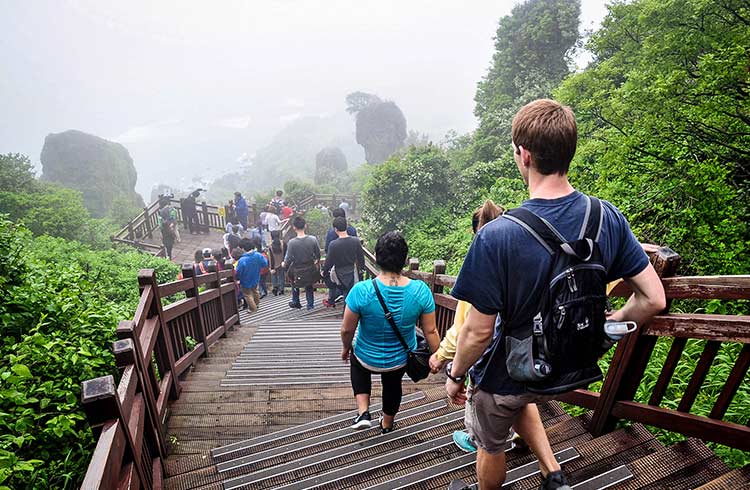 Photo © Two Wandering Soles
Photo © Two Wandering Soles
Though South Korea is a relatively small country, roughly 70% of the land is mountainous, making it the perfect hiking destination. Depending on what you’re after – fall colors, great views, proximity to Seoul – these are our picks for the best hikes in South Korea.
1. Bukhansan: most convenient hike for a short trip
If you want to get out of the craziness of Seoul, but don’t have much time to venture outside the city, this is a great choice. Located in the north of Seoul, hiking Bukhansan is a good way to experience nature, even if you have a short time in South Korea.
There are a handful of trails to choose from, but the most popular leads to Baegundae Peak and takes most hikers around two hours. At 2,744ft (837m), this is the highest point of the mountain, from where you can admire the large granite rocks and a panoramic view of Seoul sprawling out below.
One interesting feature of this hike is that you’ll walk past a replica of the ancient Bukhansanseong Fortress wall.
Word of warning: This hike is easily accessible from Seoul, so expect crowds the entire way.
2. Jirisan: tallest mountain in mainland South Korea
Jirisan is the tallest mountain in mainland South Korea and attracts 280,000 hikers each year. There’s a variety of trails, from a quick three-hour return hike offering beginners a taste of the mountain to a multi-day hike that includes a sunrise view from the top of 6,283ft (1,915m) Cheonwangbong peak.
Jirisan National Park is the first national park and largest mountainous national park in South Korea,and spans over three provinces. With seven Buddhist temples, ancient stone carvings and an emphasis on biodiversity conservation, this park is known for more than just hiking.
3. Seoraksan: best sunrise view
Sprawling down the east coast of North and South Korea, the Taebaek mountain range is home to some stunning scenery and epic hikes. At 5,603ft (1,708m), Seoraksan is the tallest peak in this range.
Reaching the highest point, Daecheongbong Peak,is breathtaking at sunrise when it’s shrouded in a thick cloak of morning mist. Daecheongbong Peak can be reached in as little as three hours, depending on your starting point.
If you don’t feel like working up a sweat, you can ride the cable car and glimpse the park from above. Located just 2.5 hours away from Seoul, a trip to Seoraksan is a great addition to your South Korea itinerary.
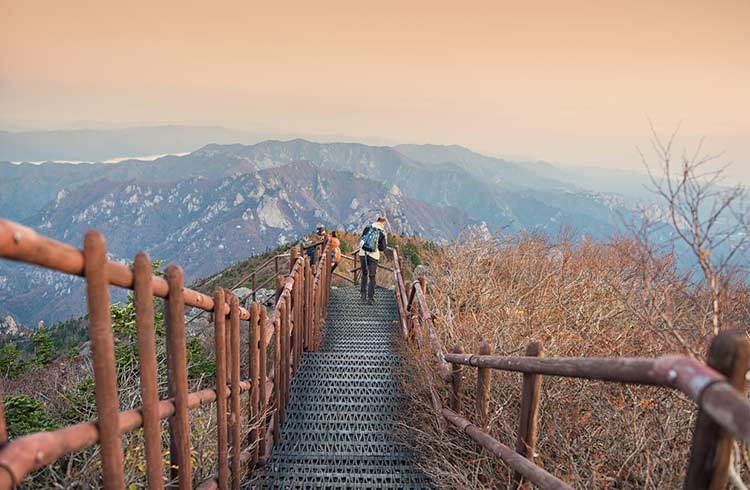
4. Hallasan: Epic volcano on Jeju Island (plus, the tallest mountain in South Korea!)
This volcanic island is often referred to as the “Hawaii of Korea”, so it’s no surprise that relaxing on beaches and hiking a volcano are some of the most popular attractions on Jeju.
Towering at 6,397ft (1,950m) above sea level, Hallasan is the tallest mountain in South Korea, and many people visit Jeju specifically to climb to the top. Hallasan is a sacred place to some Koreans, who believe that spirits live in the mountain, and worship it.
There are five trails that lead to the summit, each with varying degrees of incline. Although Seongpanak trail adds an additional 900m, it’s the most popular trail due to its gradual incline.
Depending on the trail you choose and your fitness level, you can reach the top of Hallasan and hike down in a matter of hours or a full day.
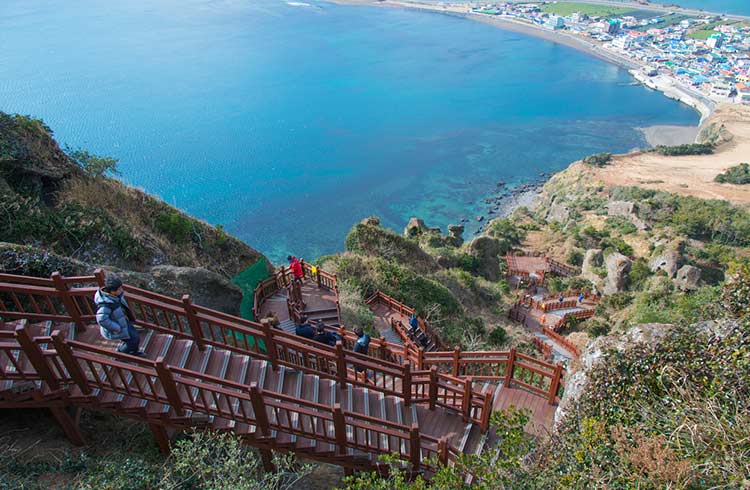
5. Naejangsan: best autumn colors
Known for its stunning foliage, this mountain range in southwestern South Korea is particularly spectacular in the fall, when you can look out over a sea of crimson leaves. This beloved mountain is located in Jeolla province, and the surrounding national park is home to famous waterfalls, temples, and endangered wildlife.
Even if you’re not visiting Korea during fall, hiking Naejangsan is still sure to impress. In spring, azaleas and cherry blossoms are in bloom, the park is surprisingly green in the summer, and winter can be spectacular when the rocks are covered in a blanket of snow.
6. Juwangsan: off-the-beaten-path nature
If you want to get off the well-trodden path and do some hiking in a place few foreigners ever see, make your way to Juwangsan National Park in Gyeongsangbuk-do province.
With caves, waterfalls and plenty of hikes suitable for all levels, this area is packed with adventures to be had – even though it’s the smallest national park in South Korea.
We planned a fall camping trip to this National Park with a group of friends and weren’t disappointed. We didn’t see any other foreigners during our weekend in Juwangsan, and we were able to try the apples which make this region famous.
If you venture to this National Park, make sure you come prepared with your own food – there aren’t many dining options out there.
Interesting fact: The word for mountain is “san” in Korean. That’s why each mountain’s name ends in “san”.
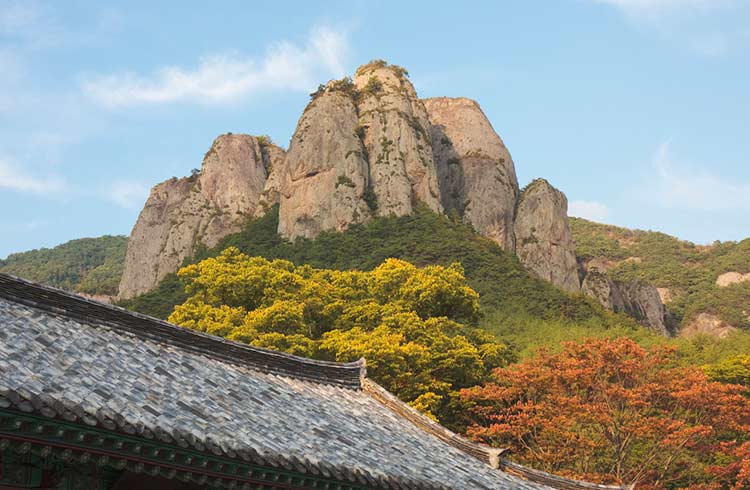
Tips for hiking in South Korea
1. Dress in appropriate hiking gear
Koreans are serious about their hiking attire and dress the part – trekking poles and all – even on trails suitable for beginners.
This isn’t to say you need to get a whole new wardrobe of athletic gear, but it’s a good idea to be prepared with layers, as temperatures can vary along the trails.
It’s also worth noting that it’s not always appropriate for women to show their shoulders in public. If you feel most comfortable wearing a tank top while hiking, be prepared for a few sideways looks.
2. Pack snacks
Often, when you reach a viewpoint, you’ll see groups of Koreans taking a break with snacks. Take this as an opportunity to join in and interact with locals while enjoying the view and a tasty treat – like fresh fruit, nuts or kimbap (the Korean take on sushi, which is a surprisingly popular hiking snack).
Koreans are very friendly – don’t be surprised if someone offers to share their food with you!
3. Carry out your trash
You won’t find trash bins along most trails, so if you plan to bring snacks, be prepared to carry out any rubbish. Picking up a few pieces of litter you see along the way is also a nice habit to practice.
4. Time it right
South Korea experiences four distinctly different seasons, and it’s best to avoid hiking in the heat and humidity of summer if possible.
The best times for hiking in South Korea are when temperatures are more moderate. Spring will reward you with cherry blossoms and in the fall, hikers can take in colorful foliage.
Related articles
Simple and flexible travel insurance
You can buy at home or while traveling, and claim online from anywhere in the world. With 150+ adventure activities covered and 24/7 emergency assistance.
Get a quote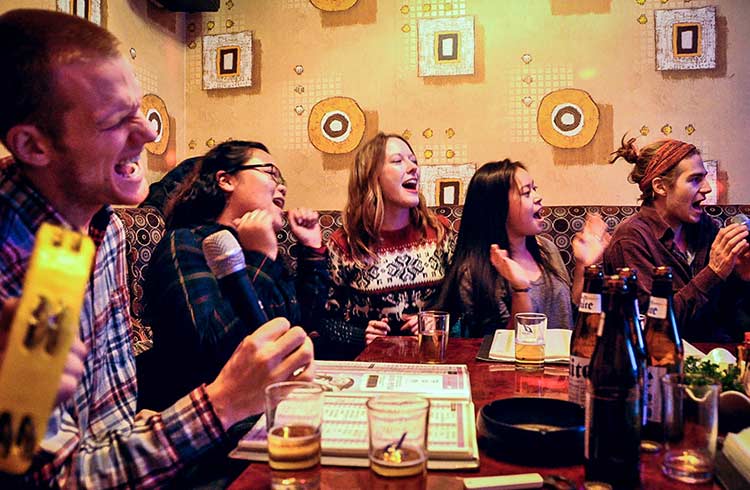

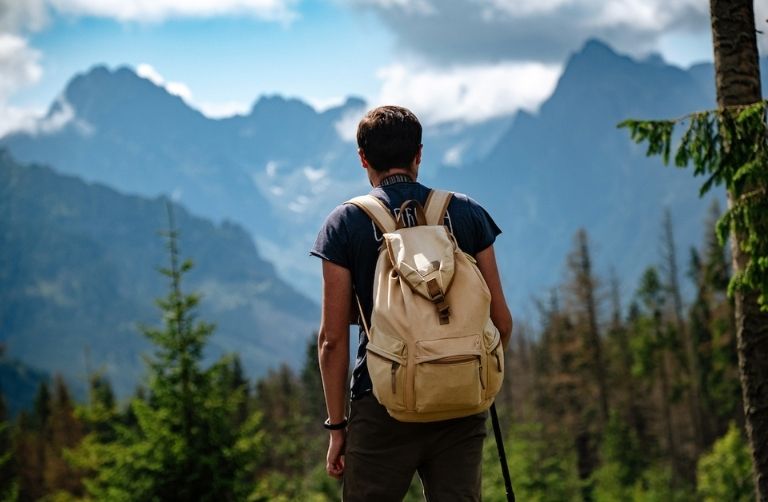
No Comments